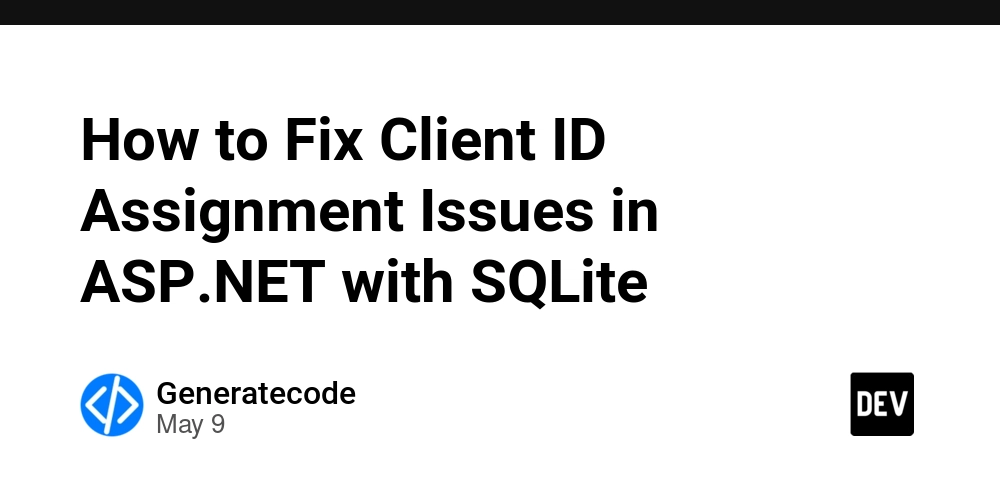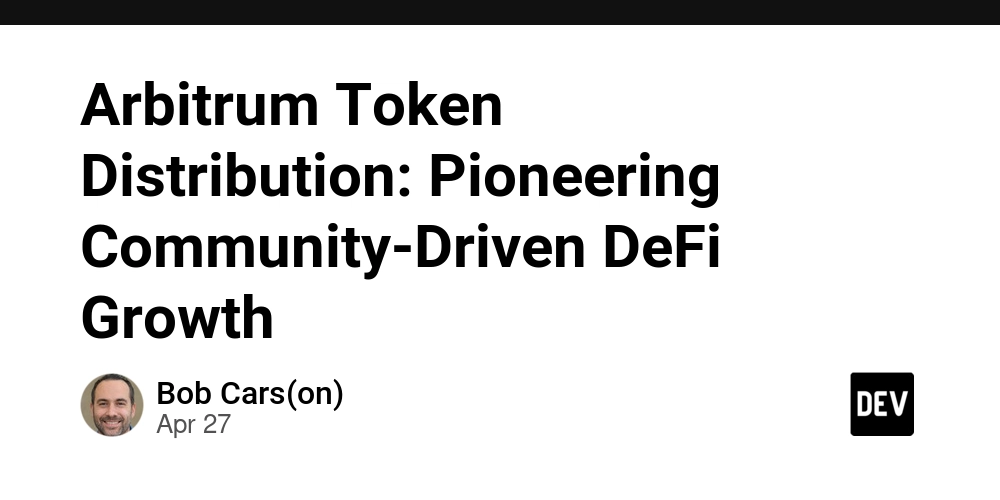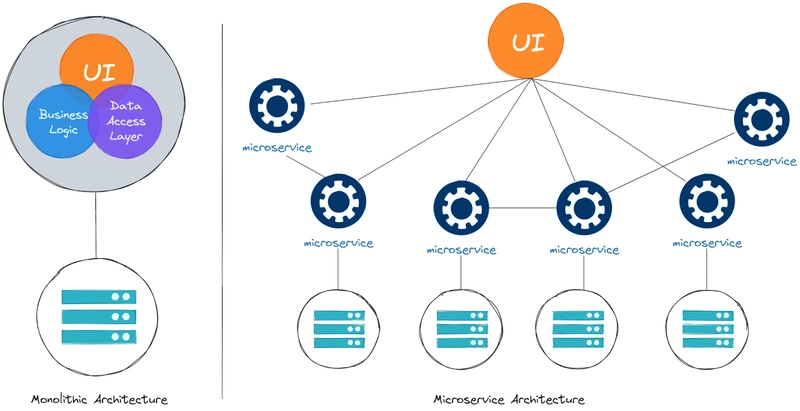How to Fix Client ID Assignment Issues in ASP.NET with SQLite
Introduction When working on a full-stack application using ASP.NET and Blazor, you might face challenges while managing relationships between entities in your databases. One common issue developers encounter is the inability to assign a Client to a Job due to errors like "Cannot assign an existing ID." This typically stems from misconfiguration in entity relationships or incorrect database handling. In this article, we will explore the possible reasons for this issue, how SQLite is utilized, and provide a solution to help you overcome this error. Understanding Entity Framework and SQLite Relationships In your case, you are using Entity Framework (EF) to manage your Client and Job entities with SQLite as the backend database. In ASP.NET, EF allows you to define relationships between entities, such as one-to-many relationships, which is evident in your code where one Client can have multiple Jobs. Understanding these relationships is crucial for managing IDs correctly. Why This Issue Happens The error you are experiencing can occur due to several reasons: Foreign Key Mismatch: If the customerId in your Job entity does not correspond to any existing Client ID, EF will throw an error. ID Type Misalignment: Ensure that the data types used for IDs in both entities are compatible. For example, if Client.Id is a string but you are trying to assign it to Job.customerId as a different type, this can also lead to issues. Untracked Entities: If you are attempting to assign a Client entity that has not been tracked by the context, that could also pose a problem. Solution Steps Let’s walk through the corrective measures step-by-step to resolve the ID assignment issue. Step 1: Ensure Data Type Consistency First, verify the data types of your IDs: public class Client { [Key] [DatabaseGenerated(DatabaseGeneratedOption.Identity)] public string Id { get; set; } // other properties } public class Job { [Key] [DatabaseGenerated(DatabaseGeneratedOption.Identity)] public string jobId { get; set; } public string customerId { get; set; } // Make sure this matches Client.Id // other properties } Here, both Client.Id and Job.customerId are defined as strings. Be sure this is maintained. Any discrepancy will lead to issues. Step 2: Update Foreign Key Configuration Ensure the foreign key relationship is correctly established in your OnModelCreating method: protected override void OnModelCreating(ModelBuilder modelBuilder) { base.OnModelCreating(modelBuilder); modelBuilder.Entity() .HasOne(j => j.Client) .WithMany(c => c.Jobs) .HasForeignKey(j => j.customerId); } The foreign key configuration should match the properties in your Job class. Specify which property is the foreign key explicitly. Step 3: Create or Retrieve Client Instances When you assign a Client to a Job, ensure you are doing so based on an existing client in the database. You may first need to retrieve or create the client instance as follows: // Assuming dbContext is your instance of the Database Context var client = await dbContext.Clients.FindAsync(clientId); if (client == null) { // Handle the case where the client does not exist throw new Exception("Client not found."); } var job = new Job { customerId = client.Id, // set other properties }; dbContext.Jobs.Add(job); await dbContext.SaveChangesAsync(); Step 4: Test Your Changes Once you have made the changes to the data type consistency, foreign key relationship, and entity instances management, test your application. Try to assign a job to an existing client again and check if the issue is resolved. Frequently Asked Questions (FAQ) 1. What should I do if my client isn’t found? If your client isn’t found, either check your database to confirm it exists, or ensure your application logic handles client creation appropriately. 2. Can I use integer types for IDs instead of strings? Yes, you can use integers, but ensure that both your Client.Id and Job.customerId are consistently configured to either string or integer types across your application. 3. How can I ensure that all jobs are correctly linked to clients? Always fetch clients from your database before assignment. Implement error handling to catch exceptions when a client does not exist to avoid crashes. Conclusion Assigning clients to jobs in your full-stack ASP.NET application involves understanding and managing your entity relationships correctly. By ensuring data type consistency, establishing foreign keys properly, and managing entities effectively, you can resolve the issue of existing IDs causing assignment errors. With these solutions, you should be well-equipped to complete your university assignment successfully!

Introduction
When working on a full-stack application using ASP.NET and Blazor, you might face challenges while managing relationships between entities in your databases. One common issue developers encounter is the inability to assign a Client to a Job due to errors like "Cannot assign an existing ID." This typically stems from misconfiguration in entity relationships or incorrect database handling. In this article, we will explore the possible reasons for this issue, how SQLite is utilized, and provide a solution to help you overcome this error.
Understanding Entity Framework and SQLite Relationships
In your case, you are using Entity Framework (EF) to manage your Client and Job entities with SQLite as the backend database. In ASP.NET, EF allows you to define relationships between entities, such as one-to-many relationships, which is evident in your code where one Client can have multiple Jobs. Understanding these relationships is crucial for managing IDs correctly.
Why This Issue Happens
The error you are experiencing can occur due to several reasons:
-
Foreign Key Mismatch: If the
customerIdin your Job entity does not correspond to any existingClientID, EF will throw an error. -
ID Type Misalignment: Ensure that the data types used for IDs in both entities are compatible. For example, if
Client.Idis a string but you are trying to assign it toJob.customerIdas a different type, this can also lead to issues. -
Untracked Entities: If you are attempting to assign a
Cliententity that has not been tracked by the context, that could also pose a problem.
Solution Steps
Let’s walk through the corrective measures step-by-step to resolve the ID assignment issue.
Step 1: Ensure Data Type Consistency
First, verify the data types of your IDs:
public class Client
{
[Key]
[DatabaseGenerated(DatabaseGeneratedOption.Identity)]
public string Id { get; set; }
// other properties
}
public class Job
{
[Key]
[DatabaseGenerated(DatabaseGeneratedOption.Identity)]
public string jobId { get; set; }
public string customerId { get; set; } // Make sure this matches Client.Id
// other properties
}
Here, both Client.Id and Job.customerId are defined as strings. Be sure this is maintained. Any discrepancy will lead to issues.
Step 2: Update Foreign Key Configuration
Ensure the foreign key relationship is correctly established in your OnModelCreating method:
protected override void OnModelCreating(ModelBuilder modelBuilder)
{
base.OnModelCreating(modelBuilder);
modelBuilder.Entity()
.HasOne(j => j.Client)
.WithMany(c => c.Jobs)
.HasForeignKey(j => j.customerId);
}
The foreign key configuration should match the properties in your Job class. Specify which property is the foreign key explicitly.
Step 3: Create or Retrieve Client Instances
When you assign a Client to a Job, ensure you are doing so based on an existing client in the database. You may first need to retrieve or create the client instance as follows:
// Assuming dbContext is your instance of the Database Context
var client = await dbContext.Clients.FindAsync(clientId);
if (client == null)
{
// Handle the case where the client does not exist
throw new Exception("Client not found.");
}
var job = new Job
{
customerId = client.Id,
// set other properties
};
dbContext.Jobs.Add(job);
await dbContext.SaveChangesAsync();
Step 4: Test Your Changes
Once you have made the changes to the data type consistency, foreign key relationship, and entity instances management, test your application. Try to assign a job to an existing client again and check if the issue is resolved.
Frequently Asked Questions (FAQ)
1. What should I do if my client isn’t found?
If your client isn’t found, either check your database to confirm it exists, or ensure your application logic handles client creation appropriately.
2. Can I use integer types for IDs instead of strings?
Yes, you can use integers, but ensure that both your Client.Id and Job.customerId are consistently configured to either string or integer types across your application.
3. How can I ensure that all jobs are correctly linked to clients?
Always fetch clients from your database before assignment. Implement error handling to catch exceptions when a client does not exist to avoid crashes.
Conclusion
Assigning clients to jobs in your full-stack ASP.NET application involves understanding and managing your entity relationships correctly. By ensuring data type consistency, establishing foreign keys properly, and managing entities effectively, you can resolve the issue of existing IDs causing assignment errors. With these solutions, you should be well-equipped to complete your university assignment successfully!












































































































































































![[The AI Show Episode 146]: Rise of “AI-First” Companies, AI Job Disruption, GPT-4o Update Gets Rolled Back, How Big Consulting Firms Use AI, and Meta AI App](https://www.marketingaiinstitute.com/hubfs/ep%20146%20cover.png)






























































































































![Ditching a Microsoft Job to Enter Startup Hell with Lonewolf Engineer Sam Crombie [Podcast #171]](https://cdn.hashnode.com/res/hashnode/image/upload/v1746753508177/0cd57f66-fdb0-4972-b285-1443a7db39fc.png?#)


























































.jpg?width=1920&height=1920&fit=bounds&quality=70&format=jpg&auto=webp#)





















































-Nintendo-Switch-2-Hands-On-Preview-Mario-Kart-World-Impressions-&-More!-00-10-30.png?width=1920&height=1920&fit=bounds&quality=70&format=jpg&auto=webp#)










































































































-xl.jpg)





























![New iPad 11 (A16) On Sale for Just $277.78! [Lowest Price Ever]](https://www.iclarified.com/images/news/97273/97273/97273-640.jpg)

![Apple Foldable iPhone to Feature New Display Tech, 19% Thinner Panel [Rumor]](https://www.iclarified.com/images/news/97271/97271/97271-640.jpg)





































































![[Weekly funding roundup May 3-9] VC inflow into Indian startups touches new high](https://images.yourstory.com/cs/2/220356402d6d11e9aa979329348d4c3e/WeeklyFundingRoundupNewLogo1-1739546168054.jpg)





























